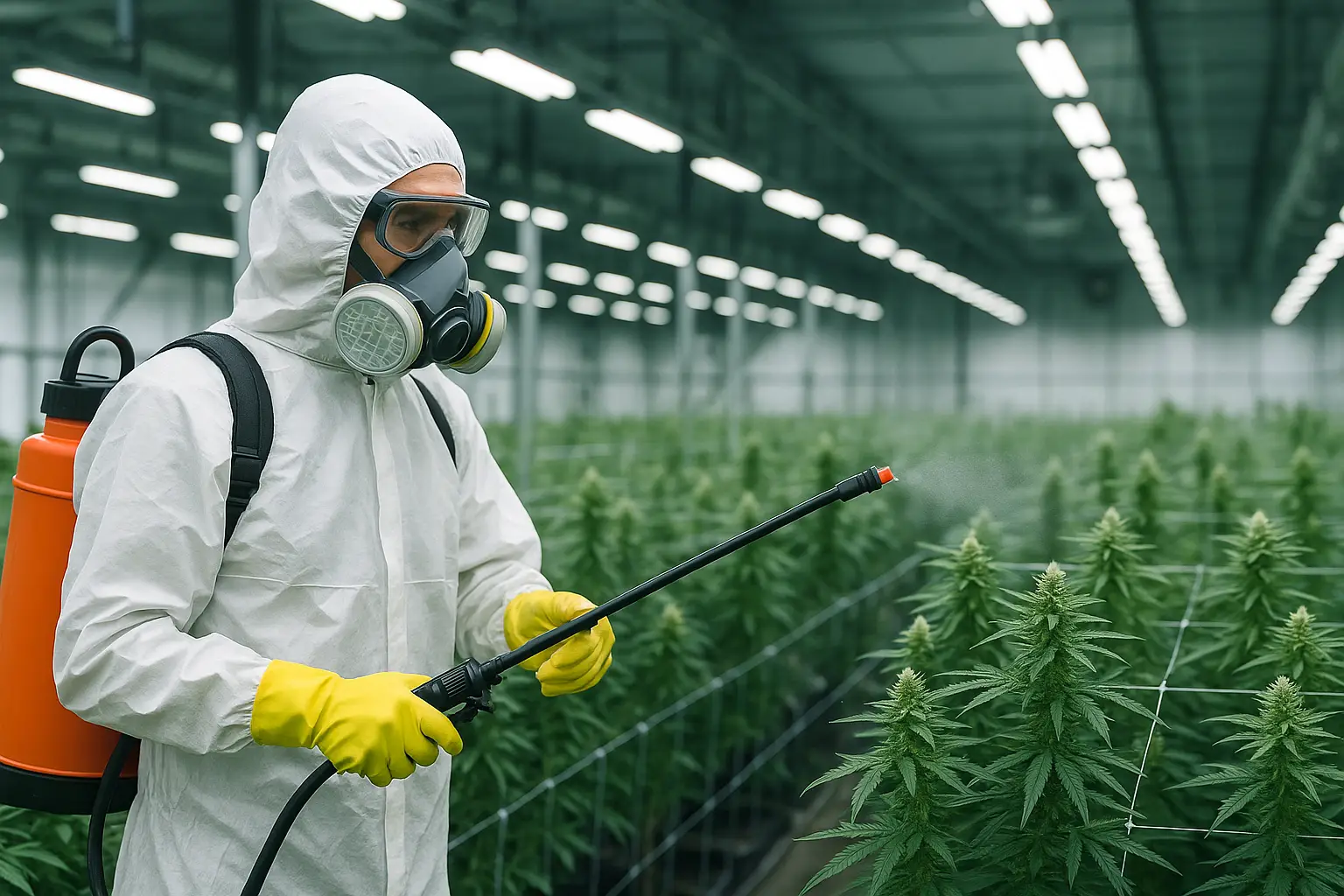Cannabis has earned a reputation as a natural, healing plant. But unless you’re growing it yourself or sourcing it from a lab-tested, regulated supplier, there’s a hidden danger many users overlook: pesticides.
Pesticide contamination in cannabis is a serious and growing concern. Unlike fruits or vegetables, cannabis buds can’t be rinsed before use. Washing them would destroy the trichomes—the fragile structures that hold THC, terpenes, and other beneficial compounds. This means any pesticide residue left on the plant remains there through drying, curing, and ultimately, smoking.
And when those contaminated buds are burned, the chemicals don’t disappear. They transform, combust, and head directly into the lungs.
What’s Actually in Contaminated Cannabis?
Recent studies have found a disturbing number of cannabis samples—especially from unregulated sources—testing positive for hazardous pesticides. Some of these chemicals include compounds like Carbaryl, Permethrin, and Propargite, which are known carcinogens. When inhaled, they don’t just enter the body—they bypass digestion and go straight into the bloodstream through the lungs.
Even more alarming, some pesticides act as neurotoxins. They’re designed to attack the nervous systems of insects, but human nervous systems aren’t immune. Long-term exposure has been linked to memory loss, developmental problems, and even increased risk of diseases like Parkinson’s.
Others disrupt the body’s hormonal system. These endocrine-disrupting chemicals interfere with natural hormone production and regulation, contributing to fertility issues, thyroid dysfunction, and other long-term health risks.
Why the Black Market Is Especially Dangerous
Legal cannabis markets in states like California, Colorado, and Oregon require testing for pesticide contamination. But outside of those systems, there are no checks. No regulations. No oversight. In the black market, growers desperate to save a crop from pests or disease often use banned or highly toxic pesticides with no regard for consumer safety.
And there’s no way to tell. Contaminated cannabis looks and smells the same. The only real difference is what happens after you light it.
There’s No Way to Clean It
Once a cannabis plant has been sprayed with pesticides, there’s no undoing it. You can’t wash it off. You can’t burn it away. Smoking, vaping, or even cooking with contaminated weed introduces those chemicals directly into the body—often at higher concentrations than people realize.
What’s worse, combustion can make some of these chemicals even more toxic. The heat alters their structure, creating new compounds that may be even more harmful than the original pesticide.
The Safer Path: Grow It Yourself
The only way to be absolutely sure what’s in your cannabis is to grow it yourself.
Home growing, especially in legal states, allows users to control every part of the process—from seed to harvest. It ensures that no harmful pesticides, fungicides, or contaminants are introduced. For those who rely on cannabis for health, wellness, or even just enjoyment, this kind of control isn’t a luxury—it’s a necessity.
In Conclusion
Contaminated cannabis is not just a quality issue—it’s a health hazard. The presence of pesticides and other chemicals in untested cannabis poses real risks, including cancer, neurological damage, and hormonal disruption. And because these chemicals are invisible and odorless, most users never even realize what they’re inhaling.
Cannabis should be safe. But safety requires awareness, responsibility, and in many cases, taking cultivation into your own hands.
If you care about what you put in your body, then it’s time to care about how your cannabis is grown.





